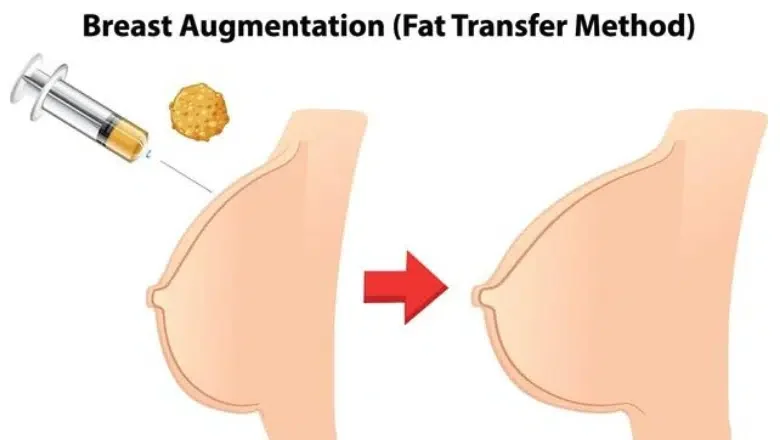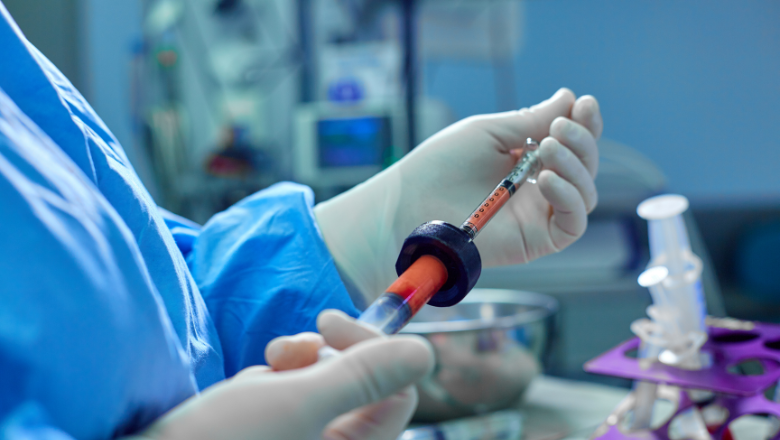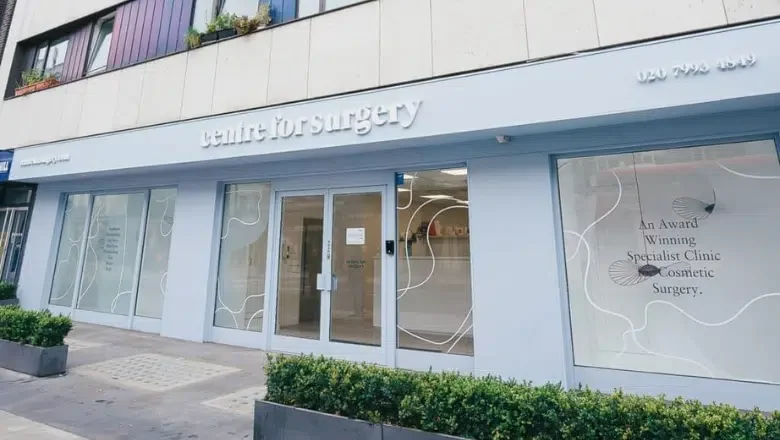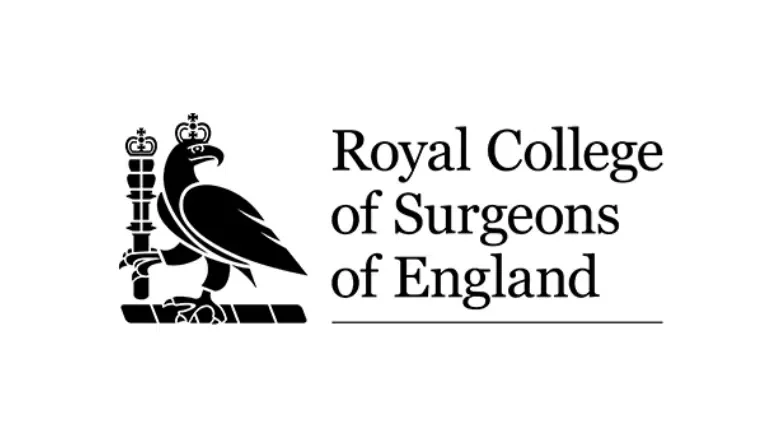How Long Do Fat Transfer Breast Augmentation Results Last?
Are you thinking about breast enlargement? If so, you might have heard about transferring fat to the breasts. This method involves using the fat from your body to enhance your breasts’ size and shape. It’s a way to get a more natural and understated look. However, before you decide, it’s crucial to know how long the results might last and what can affect their duration. This article will delve into the ins and outs of fat transfer to the breasts, explain how it functions, and provide insights into how surgeons ensure the transferred fat remains viable.
RELATED: Fat Transfer Breast Augmentation Pros & Cons
Centre for Surgery, located in the heart of London, is a leading Plastic Surgery clinic. We pride ourselves on having experienced surgeons who specialise in Fat Transfer procedures to the breasts.
How Does Fat Transfer Breast Augmentation Work?
Are you curious about how surgeons use your own body’s fat to enhance your breasts? Fat transfer breast augmentation, often called natural breast augmentation or autologous fat transfer, is a procedure that offers a softer, more organic look than conventional breast implants.
Here’s a detailed step-by-step breakdown of how the entire procedure unfolds:
Liposuction and Fat Collection
In the beginning, your surgeon will pinpoint areas of your body where there is extra fat. Common areas include the tummy, thighs, or sides of your hips.
The surgeon then conducts liposuction. Here’s what that involves: after making a small, discreet cut, they’ll use special tools that can gently suck out the fat. The goal is to extract this fat without damaging the cells, so they’re still good to use later.
Cleaning and Getting the Fat Ready
Once they have the fat, it can’t be used straight away. It needs a bit of a clean-up first. So, the extracted fat is passed through a process that removes any impurities. Think of it as sieving out anything unwanted – like any residual oils or fluids – so you’re left with just the healthy, usable fat cells. It’s this step that helps make sure the fat is in the best possible condition for the next stage.
Injecting the Fat into the Breasts
With the purified fat ready, it’s time to move to the breasts. The surgeon will make tiny incisions at specific spots on the breast. They pick these spots carefully, so any small scars are almost invisible.
The surgeon then uses a slender tube, known as a cannula, to introduce the cleaned fat into the layers of the breast tissue. It’s not just about adding volume—it’s also an art. The surgeon carefully shapes and moulds the breasts to achieve a natural-looking enhancement.
So there you have it! By the end of the procedure, you’ve got breasts enhanced by your own body’s fat, providing a soft and natural look that many people find appealing.
RELATED: Fat Transfer Breast Augmentation FAQs – Q&A about Fat Transfer to Breast
What to Expect After Undergoing Fat Transfer Breast Augmentation
After you’ve had a fat transfer to your breasts, you’ll probably notice a few changes right away. Let’s dive into the post-surgery journey:
Immediate Fullness in the Breasts
Right off the bat, your breasts may look a bit fuller than you might have imagined. Don’t be alarmed – it’s a combination of swelling and the extra amount of fat that’s been injected by the surgeon. Why the extra fat? Here’s the thing: not all the fat will stay. In the months following the procedure, your body naturally absorbs some of it, typically around 30-50%. The surgeon plans this, injecting more than needed to counteract the expected loss.
The Settling Period
After the procedure, the fat needs time to find its permanent place. Over the next 3-6 months, as the swelling subsides and some of the fat gets absorbed, you’ll begin to see the final shape and size of your breasts. This is the period when the actual effects of the augmentation come to the forefront.
Enhanced Body Contours
Remember, this procedure doesn’t just involve adding fat to the breasts. It begins with liposuction, where fat is harvested from other body parts. This means areas like the tummy, thighs, or hips might get a bit of a makeover in the process. Typically, 6-12 weeks post-surgery, the liposuctioned areas begin showing off their new contours. So, not only do you get the advantage of fuller breasts, but you also enjoy the perk of having reshaped and refined body contours in other areas.
RELATED: Recovery Time Needed For Fat Transfer To Breast Surgery
Why Do Some of the Injected Fat Cells Not Stay Post-Transfer?
During the journey of fat from one part of the body to another via fat transfer, a few bumps on the road can affect the fat cells.
Handling During Liposuction:
The very first step, liposuction, is quite rigorous. As fat is being sucked out, some cells get damaged. If a cell’s structure is compromised, it won’t survive the transfer, let alone thrive in its new location.
Living vs. Dead Fat Cells:
Here’s the tricky part: once the fat is out, we can’t easily tell which cells are still in good shape and which aren’t. So, the surgeon prepares and purifies the fat, aiming to keep as many healthy cells as possible. But inevitably, some damaged or dead cells get mixed in.
The Body’s Natural Cleanup Process:
When these non-viable (damaged or dead) cells are injected into the breast or any other area, the body identifies them as ‘not fit for purpose’. Our body has its own housekeeping system, breaking down and absorbing things that aren’t functioning as they should. This cleanup process means that over time, those non-viable fat cells get naturally eliminated.
Integration into the New Area:
The remaining healthy fat cells have to adapt to their new home. They need a blood supply to get the necessary nutrients to survive and integrate. While many establish this connection and stay on, others might not be as successful.
This natural sorting process is why surgeons typically overcompensate by injecting a bit more fat than the patient might want, predicting that a certain percentage (around 30-50%) won’t make it in the long run. So, even though it might seem like some fat is ‘lost’, this step ensures that the desired final result is achieved.
How Different Factors Can Shape Your Fat Transfer Results
When you decide to get a fat transfer procedure, it’s not just about the actual day of the surgery. The journey involves understanding how various factors, from your personal health to your daily habits, can sculpt the results over time. Let’s delve into some of these influencing factors:
Were You the Right Fit for the Procedure?
Being a suitable candidate for fat transfer is paramount. If you’re a woman in decent health with a BMI under 30, you’re likely in a good spot. But it’s also about the availability of fat. If you’re very lean, there might not be enough fat to harvest, potentially impacting the final results. It’s a balance – you need sufficient fat in donor areas without being too overweight.
The Scale’s Role in Shaping Outcomes:
Remember, the newly transferred fat is living tissue. So, if you shed some pounds post-surgery, expect the fat cells to slim down with you, potentially reducing volume. On the flip side, if you tuck into too many treats and put on weight, those cells can plump up, bulking up the volume. Consistency is key: try to keep your weight steady to ensure the transferred fat stays put.
Time’s Toll on Skin:
No one can hit the pause button on ageing. Over the years, skin naturally loses its bounce-back ability, causing drooping. This can also happen to the breasts, possibly making them less pert over time. It’s a natural progression, but remember, other treatments like breast lift surgery can step in to refresh and revive the initial results of your fat transfer.
Your Lifestyle Choices Can Sculpt the Outcome:
The way you live your life can significantly shape the long-term success of your fat transfer procedure. Eating right and moving enough can help maintain that post-surgery silhouette. But, remember moderation: going too hard with workouts too soon might interfere with the settling of the transferred fat. Post-surgery, you also need to be mindful of the way you rest. That comfy tummy-sleeping position? Best to avoid it for a few weeks, as well as side-sleeping, to let the transferred fat adjust without disturbance.
What’s the Actual Increase in Breast Size With Fat Transfer?
One of the rising stars in breast augmentation is the fat transfer procedure, renowned for its authentic outcomes and the added perk of refining body contours. If you’re mulling over this option, you might wonder, “Just how much of an enhancement can one expect?”
Typically, a fat transfer to the breasts can elevate the breast volume by around half a cup to a full cup size. This makes it an ideal pick for those ladies who wish to embrace a subtle and genuine enhancement, steering clear from a drastic shift in their bust dimensions.
Several factors determine the final size enhancement. First and foremost, it’s the pool of excess fat you have in reserve—the greater the available fat, the more potential there is for augmentation. Moreover, each person’s body has its unique way of embracing and incorporating these newly transferred fat cells, which can also influence the final look.
Now, if you fancy a bit more volume after your initial procedure, fret not! You can undergo another round of fat transfer, as long as you’ve got the required fat reserves.
For those ladies with aspirations of a more marked enhancement but still have a soft spot for the authenticity of fat transfer, there’s a solution. By marrying the fat transfer technique with breast implants, one can opt for what’s known as a composite breast augmentation. This synergistic approach allows for a notable leap in breast size while ensuring that the texture and appearance stay rooted in natural aesthetics.
Integrating Fat Transfer with Breast Implants: The Best of Both Worlds
When patients aspirate to increase breast size more substantially, marrying fat transfer with implant use presents a comprehensive solution. This dual approach serves as a tailor-made blueprint, enabling a nuanced enhancement that taps into the benefits of both techniques.
By utilising this combined method, our surgeons can deftly balance volume enhancement offered by the implants with the natural contouring that fat transfer brings to the table. This enhances the overall look and adds layers of depth, ensuring the results last longer and appear seamlessly integrated. The resultant look is a harmonious blend that aligns with the patient’s vision, delivering both size and a soft, natural finish.
Fat Transfer to Breasts: Addressing Common Questions
How long can I expect the enhancement from fat transfer to the breasts to remain?
Fat transfer breast enhancement durability does differ from person to person. Although the fat transferred often gives enduring outcomes, you should expect some of the fat to diminish over time naturally. The lastingness of the augmentation can be impacted by the surgical procedure adopted, individual patient traits, and post-surgical lifestyle. One can optimise the procedure’s lasting effects by maintaining consistent body weight, steering clear of drastic weight variations, and heeding aftercare guidance.
Is the enlargement from a fat transfer breast augmentation everlasting?
Though fat transfer breast augmentation can offer outcomes that stand the test of time, it’s crucial to recognise that the results might undergo modifications. The body might naturally reabsorb a fraction of the relocated fat, which could reduce the initial plumpness and volume. Nevertheless, much of the transferred fat often successfully integrates, residing in the breasts for extended periods. The persistence of these results can hinge on various influences, like individual patient attributes, the expertise of the surgery, and one’s lifestyle.
Will my workout regime or weight shifts influence the fat transfer breast enhancement longevity?
Indeed, your workout habits and weight variances can have an effect on the duration of your fat transfer breast enhancement. Engaging in rigorous exercise or undergoing significant weight adjustments can potentially impact the transferred fat’s stability. It’s advisable to have an in-depth chat about your fitness and weight management intentions with your plastic surgeon prior to the surgery. Upholding a wholesome lifestyle, which encompasses regular workouts and a nutritious diet, can bolster the longevity of the augmentation.
Could there be potential complications following fat transfer breast augmentation?
Like all surgeries, fat transfer breast augmentation isn’t devoid of potential hitches and risks. Possible complications can range from infections, haematomas, and asymmetry, to altered nipple sensitivity and less-than-satisfactory visual results. However, choosing the right surgeon, being an ideal candidate, and stringently following aftercare recommendations can significantly cut down these risks.
Can merging fat transfer with breast implants yield more prolonged outcomes?
Indeed, amalgamating fat transfer with breast implants can be an optimal strategy for those desiring a pronounced volume augmentation or a more significant breast enhancement. This blended technique crafts a bespoke solution, harnessing the merits of both fat transfer and implant procedures.
Centre for Surgery: The Premier Choice for Excellence
Why Choose Centre for Surgery?
At the Centre for Surgery, we’ve carved out a reputation for unparalleled excellence. Situated in the heart of London, we are not just another plastic surgery clinic. Here’s why:
Unmatched Expertise
Our team comprises some of the most accomplished, board-certified surgeons with decades of combined experience. They’ve been trained at some of the most prestigious institutions globally, ensuring you’re in the safest hands possible.
Innovative Procedures
We are at the forefront of cutting-edge surgical techniques and technologies. From the latest laser treatments to minimally invasive procedures, we’ve equipped our Baker Street clinic with the most advanced tools for optimal results.
Patient-Centric Care
At our Centre, you’re more than just a patient—you’re a valued individual. Our approach is holistic; from the moment you walk in to the time you leave and beyond, we ensure you receive comprehensive care tailored to your needs.
Transparent Pricing
There are no hidden fees or surprises. We believe in complete transparency regarding pricing, so you can plan without any financial anxieties.
State-of-the-art Facility
Safety, comfort, and hygiene are our top priorities. Our clinic boasts ultramodern facilities, ensuring a seamless journey from consultation to recovery.
Hear From Our Patients:
Lucy, 32
🌟🌟🌟🌟🌟
“I always thought cosmetic surgery was not for ‘someone like me’. But from the first consultation at Centre for Surgery, I felt at ease. The team was incredibly supportive, and the results? Simply phenomenal! I can’t recommend them enough.”
Michael, 45
🌟🌟🌟🌟🌟
“I chose the Centre for Surgery for my rhinoplasty, and it was the best decision of my life. The surgeons are true artists. Recovery was swift, and the staff was always there to answer my myriad of questions. Top-notch service.”
Priya, 28
🌟🌟🌟🌟🌟
“Having battled with body image issues for years, the team at Centre for Surgery transformed not just my body but also my confidence. The post-surgery support was as commendable as the surgery itself. Heartfelt thanks to the entire team.”
So, when you’re contemplating transformative procedures, remember that at Centre for Surgery, we blend expertise, care, and innovation to turn your aesthetic dreams into reality. Be a part of our ever-growing family, and let’s craft your best self together!
RELATED: How Much Does Fat Transfer Breast Augmentation Cost?













